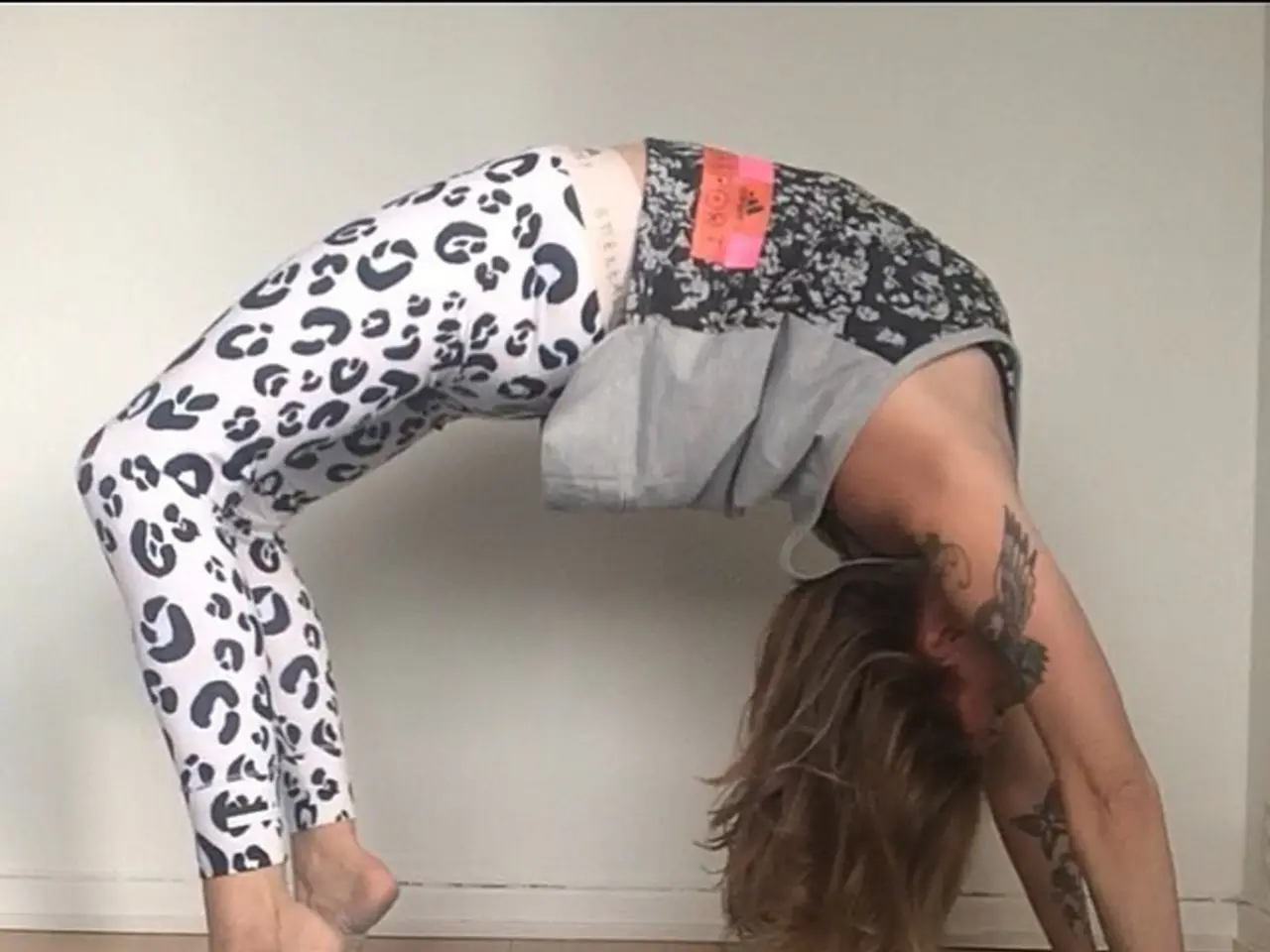Dowager's Hump Explanation and Removal Strategies
A dowager's hump, also known as kyphosis, is an excessive curvature of the upper spine that can manifest as a hump at the base of the neck. This condition is commonly caused by poor posture, osteoporosis-related vertebral fractures, and muscle imbalances.
Common causes of a dowager's hump include poor posture, such as slouching, forward head posture, and prolonged screen time, which strain neck and upper back muscles, shifting spinal alignment and gradually leading to postural kyphosis or a dowager's hump often called “tech neck.” Osteoporosis can also cause a dowager's hump, as it leads to compression fractures in the upper spine that increase kyphosis. Muscle imbalances and weakness, particularly in the upper back muscles and tightness in chest muscles, contribute to poor alignment and the hump formation.
Age-related spinal degeneration, excess fat deposits (in some cases, such as with Cushing’s syndrome), and underlying bony or ligamentous pathologies or congenital problems can also lead to a dowager's hump.
Prevention methods focus on early intervention with posture correction and lifestyle changes. Maintaining good posture, strengthening upper back muscles, stretching chest muscles, managing bone health, limiting prolonged forward head positioning, and undergoing medical evaluation for early diagnosis and treatment are key strategies for preventing a dowager's hump.
Regularly practicing keeping the head aligned over the shoulders, especially during desk work and phone use, helps maintain good posture. Exercises targeting the trapezius, rhomboids, and spinal extensors help balance muscles around the spine. Stretching chest muscles can reduce forward shoulder rounding that worsens kyphosis. Preventing or treating osteoporosis with adequate calcium, vitamin D, and medical care can reduce vertebral fractures. Taking frequent breaks from screens, using ergonomic workstations, and adjusting device height to eye level can help limit prolonged forward head positioning.
Medical evaluation, including a physical exam and imaging, helps determine if underlying conditions (e.g., osteoporosis, endocrine disorders) contribute to the hump and guide treatment. A healthcare provider may recommend physical therapy to learn how to do these exercises correctly.
Treatment for a dowager's hump can take months, and the first step is determining the cause of the neck hump. For posture-related neck humps, it's recommended that you improve your joint mobility, increase your muscle strength, and practice good posture. Chiropractors and/or physical therapists can help address posture-related neck humps.
Women are more likely to develop a dowager's hump due to hormone changes during menopause, which can increase their risk of osteoporosis. A dowager's hump may also be accompanied by rounded shoulders, tight hamstrings, pain or stiffness in the back and shoulder blades, extreme fatigue, headaches, or migraines.
Dr. Price suggests doing chin tucks, scapular squeezes, and doorway pectoral stretches to strengthen upper back and neck muscles to potentially improve or reverse a dowager's hump. Holding your cell phone at eye level and making necessary height adjustments for your computer can help prevent a dowager's hump.
It's important to note that a dowager's hump can be mistaken for a buffalo hump, a condition related to Cushing's disease. Kyphosis can affect posture and make standing a challenge. Bending forward constantly increases the risk of disk problems and neck fatigue due to the increased pressure on the discs and increased load on the muscles.
In summary, dowager’s hump from poor posture is largely preventable by maintaining spinal muscle balance, correcting posture habits early, protecting bone health, and addressing any underlying medical conditions promptly.
- The strain on neck and upper back muscles from poor posture, such as slouching, forward head posture, and prolonged screen time, can lead to a dowager's hump, a condition characterized by excessive curvature of the upper spine.
- Strengthening upper back muscles, stretching chest muscles, and managing bone health are key prevention strategies for avoiding a dowager's hump.
- For posture-related neck humps, improving joint mobility, increasing muscle strength, and practicing good posture can potentially improve or reverse the condition.
- Women, especially during menopause, are more susceptible to developing a dowager's hump due to hormone changes that increase the risk of osteoporosis.
- In addition to exercises for the upper back and neck muscles, using ergonomic workstations, making height adjustments for devices, and being mindful of posture during phone use can help prevent a dowager's hump.




